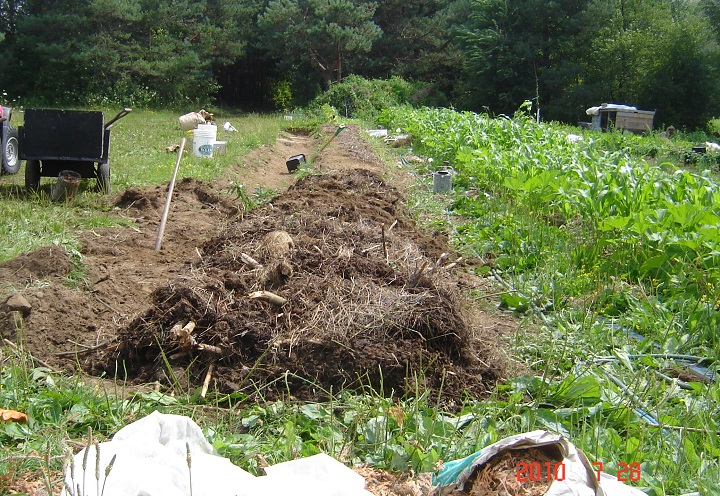Mulching Techniques for Hugelkultur Beds
Hugelkultur, a German term meaning “hill culture” or “mound culture,” is a permaculture technique that involves creating raised beds using woody debris and other organic materials. These beds are designed to retain moisture, improve soil fertility, and provide long-term benefits to plants. Mulching plays a significant role in maintaining the health and productivity of hugelkultur beds. In this article, we will explore some effective mulching techniques for hugelkultur beds.
1. Initial Mulching:
Once you have constructed your hugelkultur bed by layering logs, branches, leaves, grass clippings, straw, and other organic matter, it’s time to apply an initial layer of mulch over the entire surface. This helps in retaining moisture and preventing weed growth during the decomposition process of the underlying organic materials.
Straw or hay is commonly used as an initial mulch layer due to its availability and ability to break down relatively quickly. Spread a thick layer (around 4-6 inches) evenly across the entire bed surface. Make sure not to use hay with seeds unless you’re prepared for potential weed issues later on.
2. Compost Layer:
After applying the initial mulch layer, add a compost layer on top of it. Compost provides additional nutrients for plant growth while further improving water retention capabilities in your hugelkultur bed.
Spread a few inches of well-aged compost evenly over the straw or hay mulch layer. Ensure that your compost doesn’t contain any invasive weeds or diseased plant material that could harm your crops.
3. Leaf Mulch:
During fall or whenever there is an abundance of fallen leaves available on your property, consider adding them as an additional mulch layer on top of your hugelkultur bed.
Leaves act as excellent insulators by regulating soil temperature while also retaining moisture. They break down slowly, providing a steady release of nutrients to your plants over time. Collect fallen leaves and spread them evenly around 2-3 inches thick on the compost layer.
4. Grass Clippings:
Grass clippings can serve as an effective mulch for hugelkultur beds, especially during the growing season when you have excess lawn trimmings.
Spread a thin layer (around 1-2 inches) of grass clippings over the leaf mulch layer to enhance moisture retention and prevent weed growth. However, ensure that your grass clippings are free from herbicides or pesticides that could harm your plants.
5. Straw Mulching:
To maintain moisture levels within your hugelkultur bed during hot summer months or dry spells, consider applying straw as an additional mulch layer.
Straw acts as a protective barrier against evaporation and helps regulate soil temperature. Apply a thin layer (around 1-2 inches) of straw over the existing layers of mulch to conserve water and reduce weed competition.
6. Living Mulch:
Incorporating living plants into your hugelkultur bed not only adds aesthetic appeal but also serves as an effective form of mulching.
Choose low-growing ground covers or perennial plants with dense foliage that can suppress weeds while conserving soil moisture. Examples include clover, creeping thyme, or oregano. Plant them directly into the topmost layer of mulch to create living mulch cover for your hugelkultur bed.
7. Regular Maintenance:
Mulching is an ongoing process in maintaining healthy hugelkultur beds. As organic materials decompose over time, replenish the layers periodically by adding more straw, grass clippings, leaves, or compost.
Avoid excessive amounts of fresh wood chips since they may compete with plant roots for nitrogen during decomposition unless they are well-aged first. Strive to maintain a healthy balance of mulching materials to ensure optimal conditions for plant growth.
In conclusion, mulching plays a vital role in the success of hugelkultur beds. By applying various layers of mulch, such as straw, compost, leaves, grass clippings, and living plants, you can enhance moisture retention, suppress weeds, regulate soil temperature, and provide continuous nutrients to your crops. Regular maintenance and periodic replenishment of mulch layers will help you maintain productive and resilient hugelkultur beds for years to come.


Leave a comment